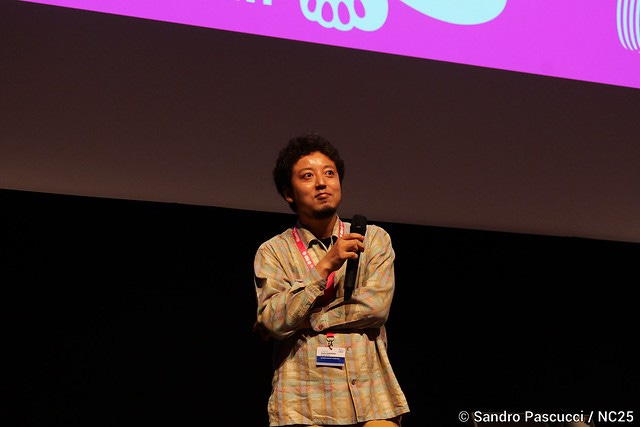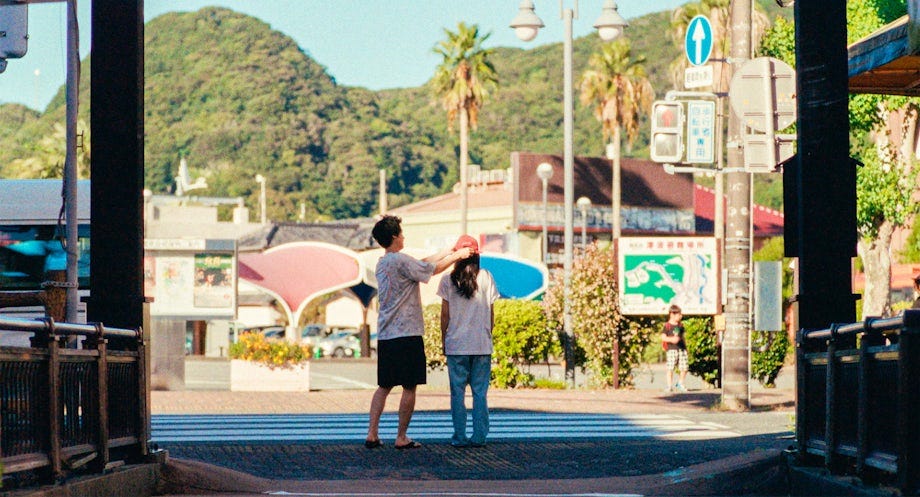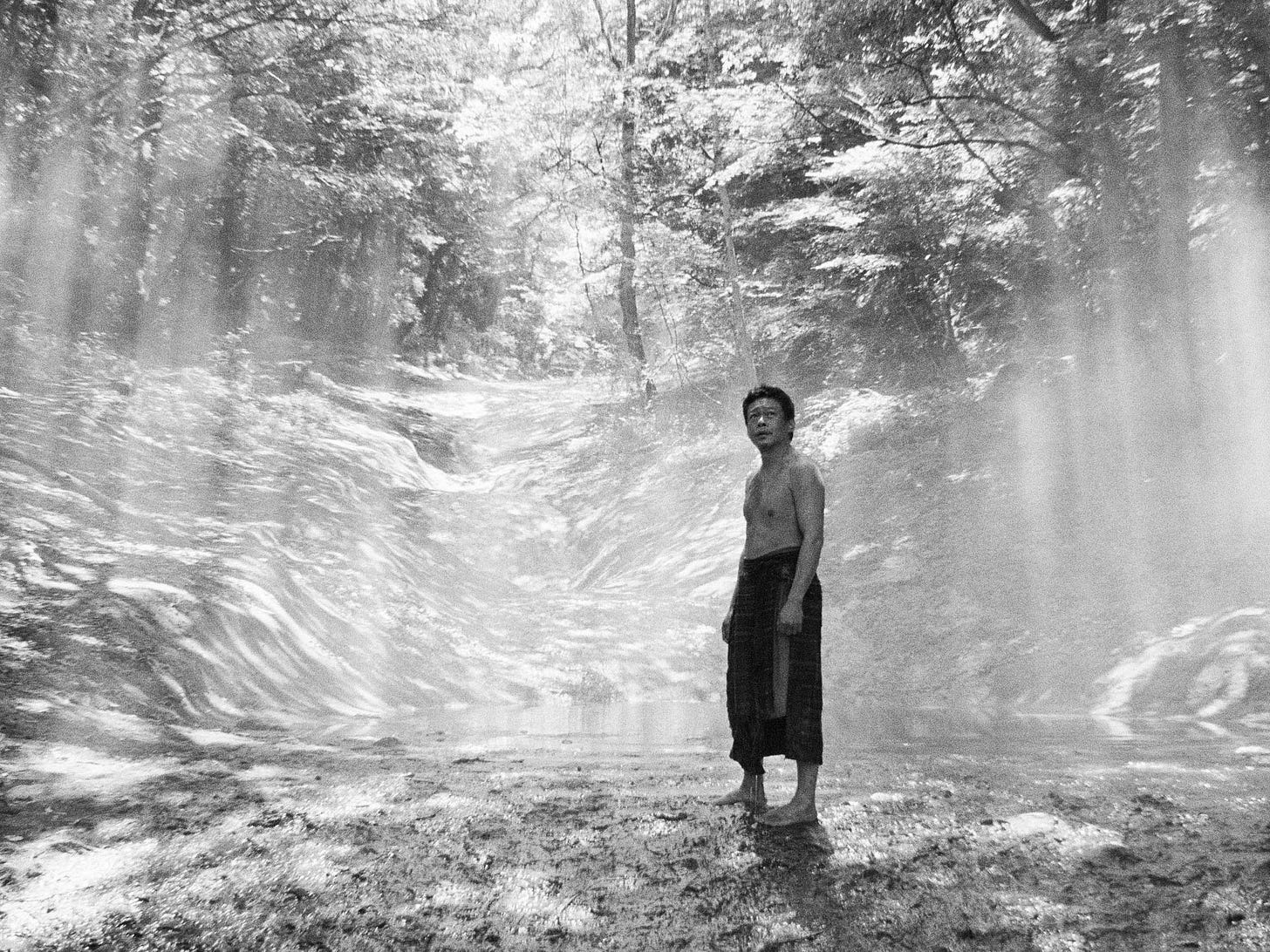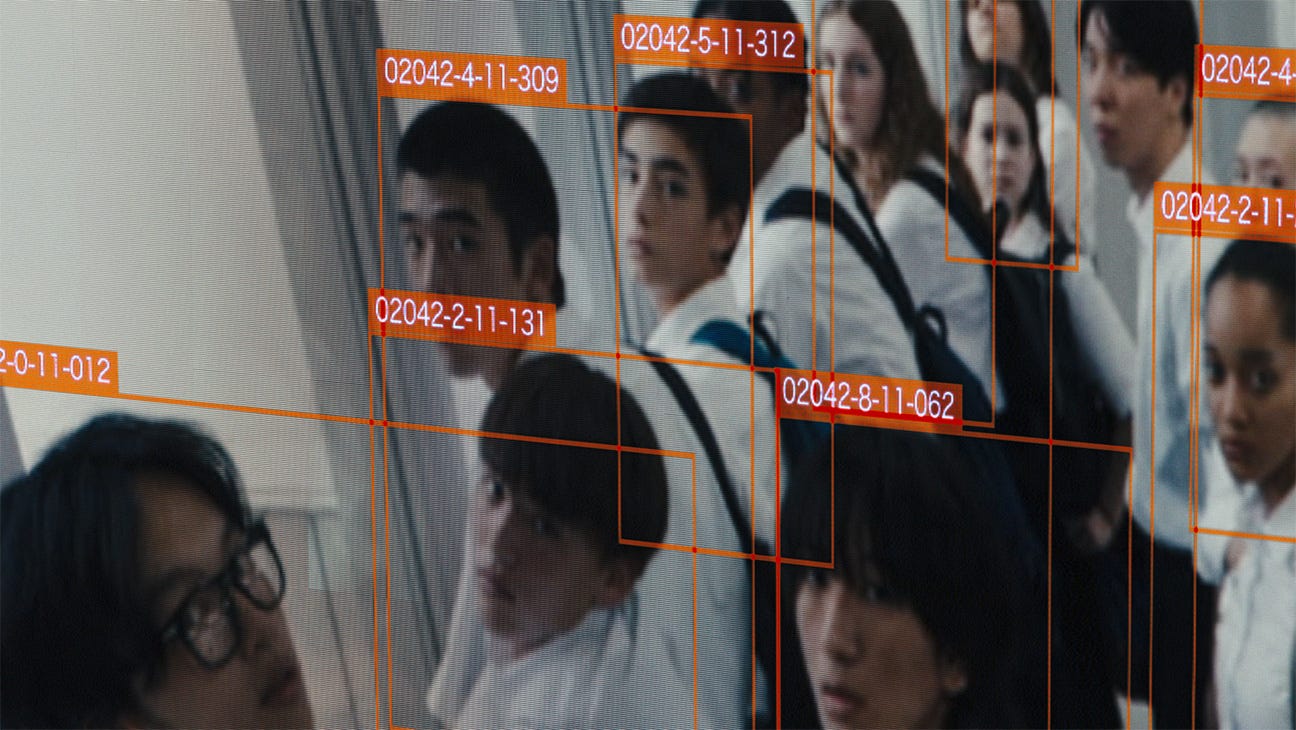Koichi Kubodera on co-writing ‘Super Happy Forever’ and ‘Black Ox’: “It was a fortuitous coincidence”
A rising screenwriting star talks chance encounters and evolving processes
This is the first time anyone has interviewed Koichi Kubodera about his work.
A collaborative screenwriter, Kubodera co-wrote two of my favourite films of last year: temporal romance Super Happy Forever and environmentalist slow cinema feature Black Ox. Regular readers of my writing may be familiar with each. You can read my conversation with Super Happy Forever director Kohei Igarashi over at ScreenAnarchy, and my conversation with Black Ox director Tetsuichiro Tsuta here on this very Substack. Kubodera also contributed additional writing to Neo Sora’s excellent Happyend.
As such, I find myself with a lot to ask about, and speaking with Kubodera reminds me why I love what I do. Kubodera is wide-eyed as he speaks, conversational and passionate — not only about the films that he’s been a part of developing, but also about the people that he’s had the pleasure of collaborating with.
Sitting down with me in the press room of the 25th Nippon Connection Festival in Frankfurt, Kubodera elaborates on his journey into screenwriting — and how social smoking can lead to fortuitous encounters and opportunities.

It's a real pleasure and privilege to speak with you. To start us off, I'd love to hear how you were brought on board each of these projects and what your prior experience in screenwriting was.
Igarashi-san, [director of Super Happy Forever] was actually one of my seniors in college. When he was in his fourth year, I was in my freshman year. We first met in the smoking area. I noticed a person with a hat and long hair. “Who is this person?”, I wondered. Later on, I had the chance to watch his film, and I was so impressed. So we struck up a conversation, and we began working together.
Actors [Hiroki] Sano and [Yoshinori] Miyata emailed Igarashi-san seven years ago asking to work on a film together. They worked on it together for nearly three years, but they hadn’t figured out how to put the pieces together. So Igarashi-san called me, and we spent another two years writing the script. We wrote a prototype short for Super Happy Forever, Two of Us (2023), which similarly starred Sano and Miyata.
Black Ox was thanks to fortuitous coincidence. I was out drinking with [actor and director] Goichi Mine. He directed the masterpiece The Kumamoto Dormitory (2012), and starred in Igarashi-san’s 2013 film, Hold Your Breath Like A Lover. Mine-san got a call from a senior, and I was asked if I’d like to join them. We headed there, and I met the director of Black Ox, [Tetsuichiro Tsuta].
What's striking about both Super Happy Forever and Black Ox is how visually-driven the storytelling is. What's that like to write on the page?
To start with Black Ox: there’s no dialogue, so it was quite hard — but a lot of fun. It was hard to find a good location to shoot this film in. Super Happy Forever has a more defined narrative.
What the two have in common is that the people behind the camera did an amazing job, and chose the best locations to shoot in.
How involved were you with each of these films beyond the initial writing? Were you there on set?
I was on set during the shoot for both films. I was also the driver, and I carried stuff for everyone! When there was a snack break, the director would call me over and we'd discuss how we should work with this or that line. It was very fun to be on set.
What are Kohei Igarashi and Tetsuichiro Tsuta like to collaborate with? Are their creative processes quite different from one another?
They’re very similar — almost the same in fact. We had regular meetings to discuss the film during the production of Black Ox, and this was the case with Super Happy Forever also. With Super Happy Forever, a lot of our discussions were about the progression of the film — the second half especially. We spent more time discussing the screenplay than we did writing it.
I was the screenwriter on Black Ox, crafting a written screenplay based on the results of discussion between myself and the script team — which consisted of myself, director Tetsuichiro Tsuta, and Masayuki Ueda prior to the shoot. During the shoot, assistant director Keita Kumano (Great Absence) joined the script team. On Super Happy Forever I was the co-writer with Igarashi-san. Both felt like great accomplishments.
It’s wonderful to spotlight your work on these films, because English-language databases are far from comprehensive in their credits. Tell me about your work on Happyend.
[Director] Neo Sora wrote the screenplay for Happyend. I provided additional writing, and I began receiving the drafts when the screenplay was almost finished. Because he’s from New York, there were many things he didn’t know about the culture and atmosphere of a Japanese high school. So I also gave him advice and notes on those aspects. For example, he didn’t know that students in high school would be met with such serious punishment if they smoked in school — because you see it happen in manga, right? I was only involved with the project for a couple of weeks.
What drives and inspires you in your work?
So far, I’ve had a lot of invitations from other people in this industry. I’d like to make something intriguing and see how far I can push myself.
There’s nothing more enjoyable for me than being able to talk with a film director about the work. This discussion-based process is the best — nothing can trump that for me.
This interview was conducted at the 25th Nippon Connection Festival in Frankfurt. With many thanks to Keiko Den for translation, and to the press office of Nippon Connection for arranging and facilitating this interview.







